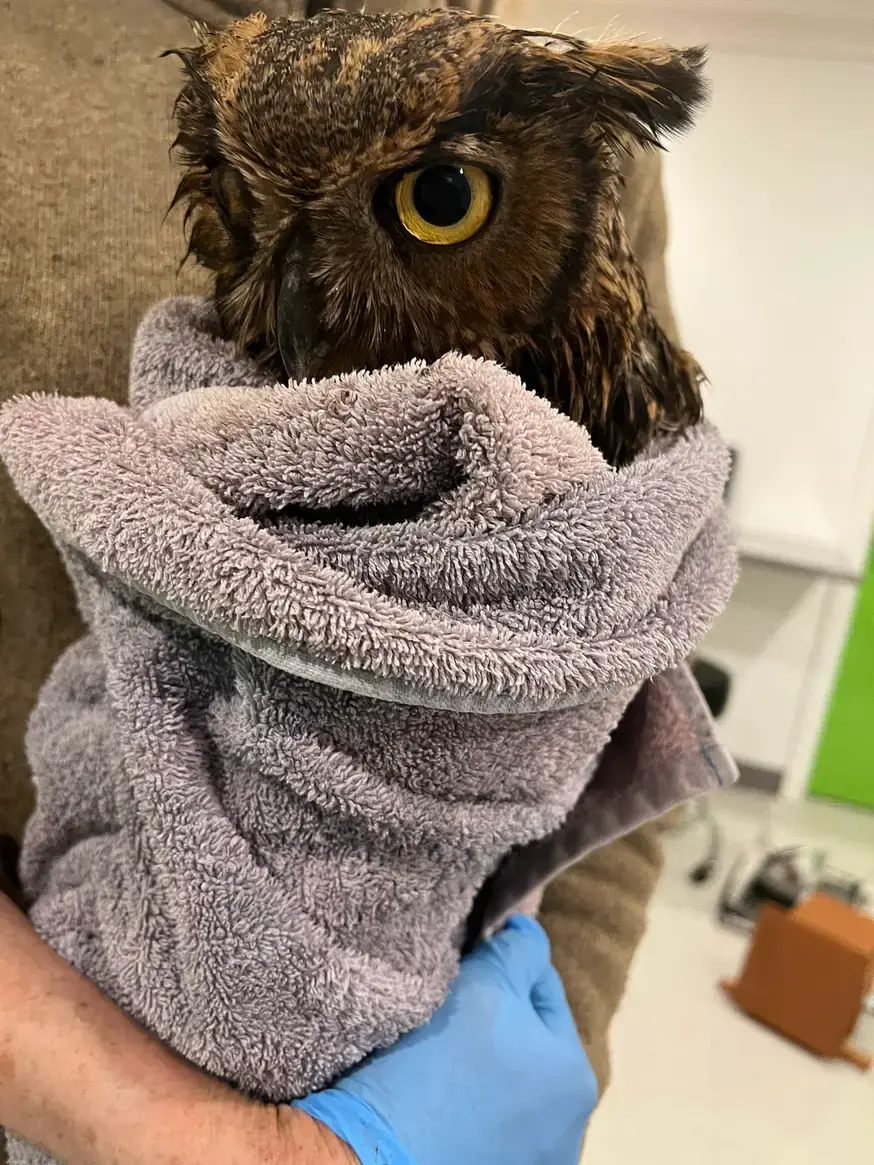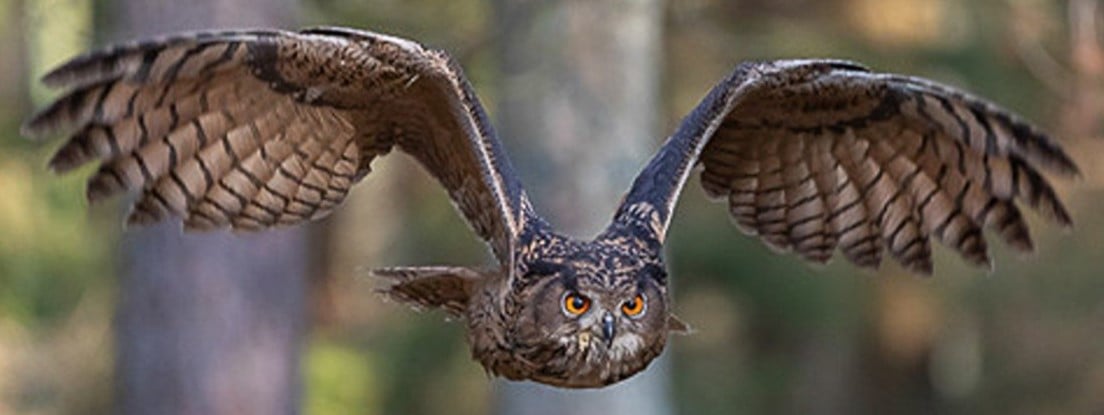Our friends at Cascades Raptor Center in Oregon haven't stopped working just because nature wiped out half their facility in a snowstorm! Here's a story of a GHO who got fixed up right during their repair efforts.
Despite our visitor center being closed to the public, the Louise Shimmel Wildlife Hospital has been up and running, even through the storm! Pictured is a Great Horned Owl who was found tangled in the fence of an Emu pen on a rainy day. It was so wet and muddy from the rain that it wasn't able to fly, and came into the hospital with a coracoid fracture and an old eye injury. Our team gave it a bath and with time and rest it successfully recovered and was released last week!
The coracoid is a protrusion of the scapula. You have one as well, though it isn't the exact same thing anymore in humans. In birds, it's an attachment point for muscles providing opposing force to the strong pectoral muscles used in downward wing flaps. To withstand that force, it takes a pretty serious impact to damage it, so there is usually also surrounding damage.
From Veterinary Information Network (long time resource for vets, started as BBS in 1990!)
Studies have shown that coracoid injuries often yield a characteristic flight pattern described as an inability to gain altitude while flying only short distances, low to the ground. This is most likely due to an inability to raise the injured wing above the shoulder. Wing droop may or may not be present.
It's good they could get this owl back doing its thing so quickly! Great job as always!


What a pretty guy! That injury sounds terrible for a bird. Does it heal on its own? Or do they need to do some kind of surgical intervention?
You reminded me I forgot to put up pics of the bone.
Here is a GHO coracoid:
Gerneralized picture to help you locate it:
And for comparison's sake, a human coracoid:
As to an outcome of what would happen in the wild, this seems to not have much available data. The VINS article linked mentions this is a fairly common injury. It then goes on to say there are a number of ways that the bone can either break or that it can get dislocated without necessarily breaking. The difficulty seems to be that, well, wild birds on the loose are hard to keep track of over a long period of time, so it's hard to gauge their success.
While owl have large wings for their size, the extra isnt "spare," it allows them to flap less to add to their stealth. I would think any wing related damage would affect their silence, making it harder to hunt or to carry food back to safety or in avoiding future obstacles.
Flight seems very cool, but if it was all great, everything would fly. There are many tradeoffs, especially in durability of bones, as weight that would provide strength is a detriment to flight. Even in peak health, I believe hunting success rates hover around 40%, and every failed hunt is lost calories needed to live, making the next failed hunt even harder.
Quick snippet from this paper for you, I gotta get back to work for now! 😇